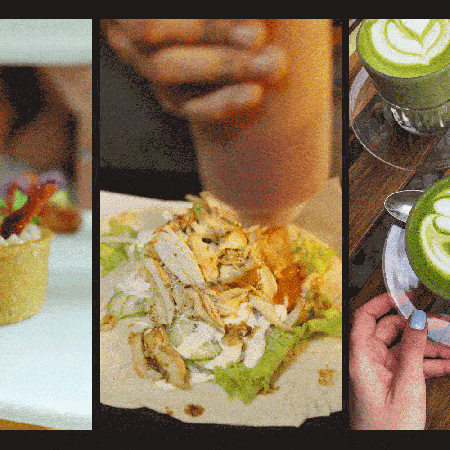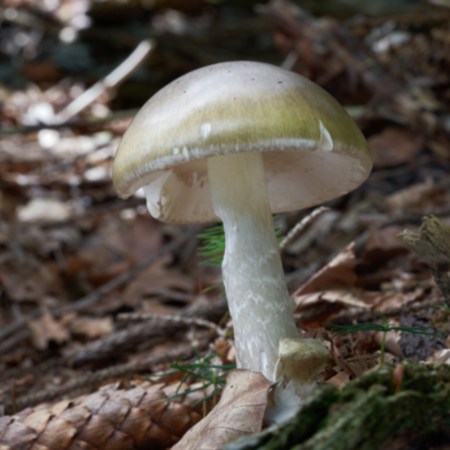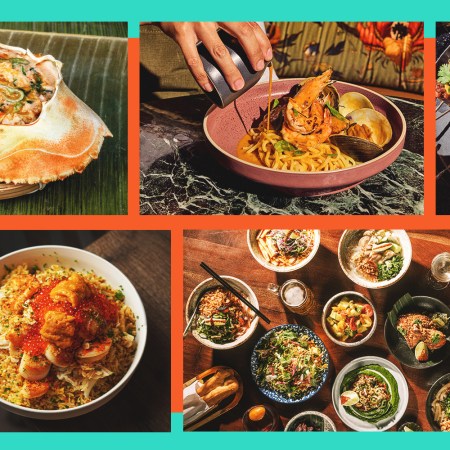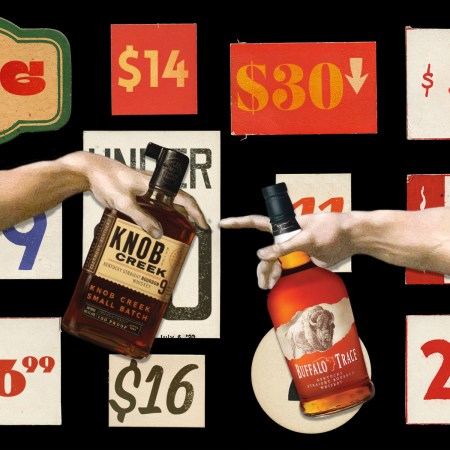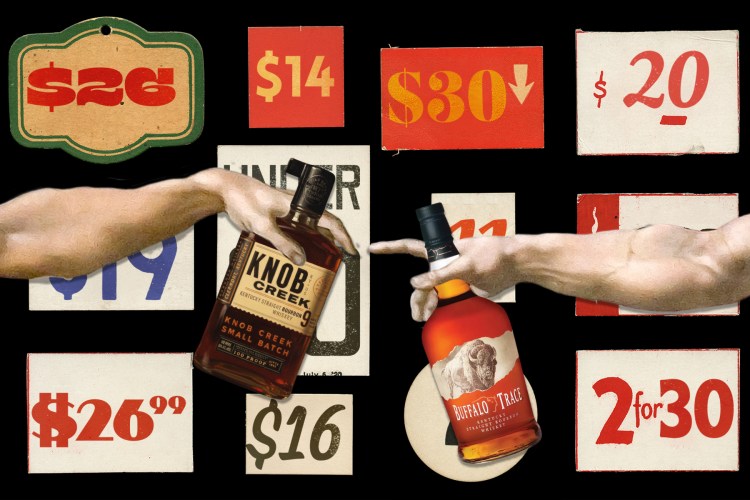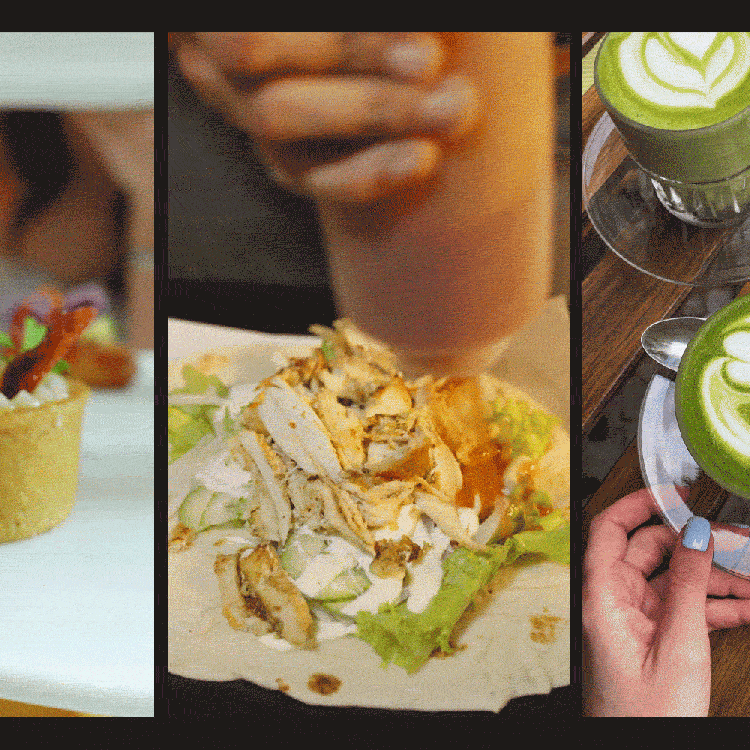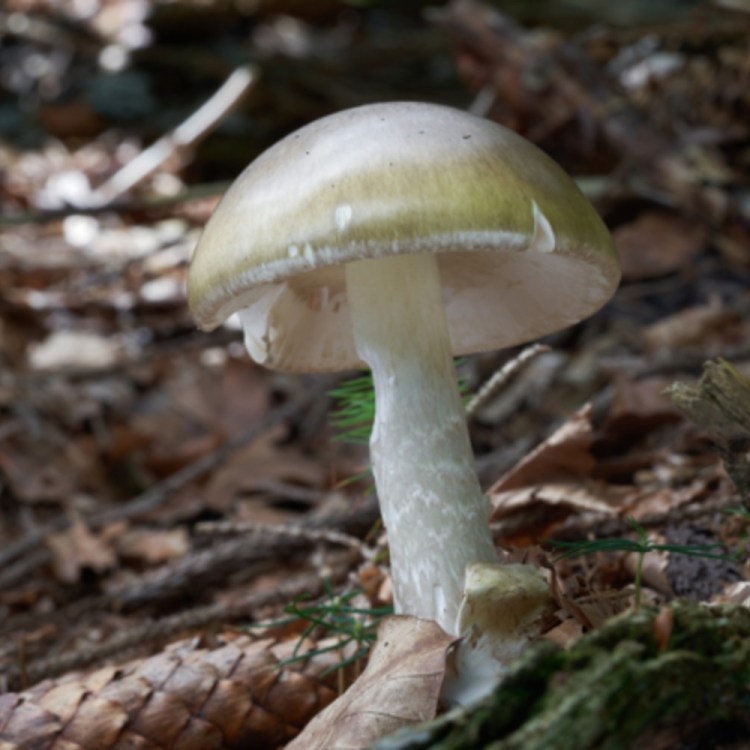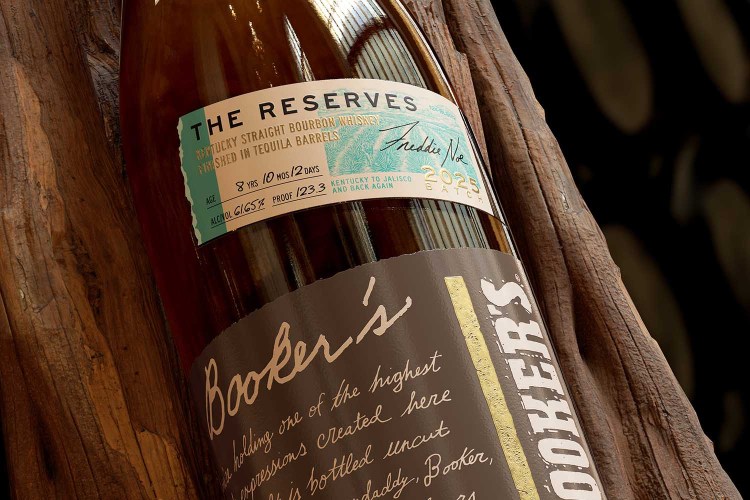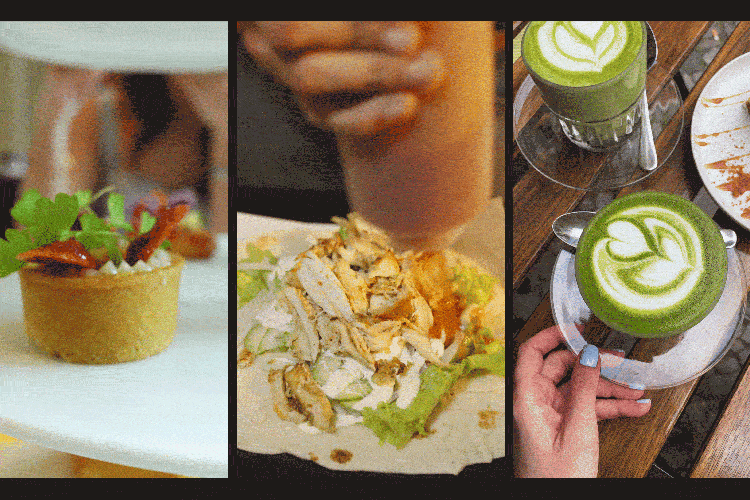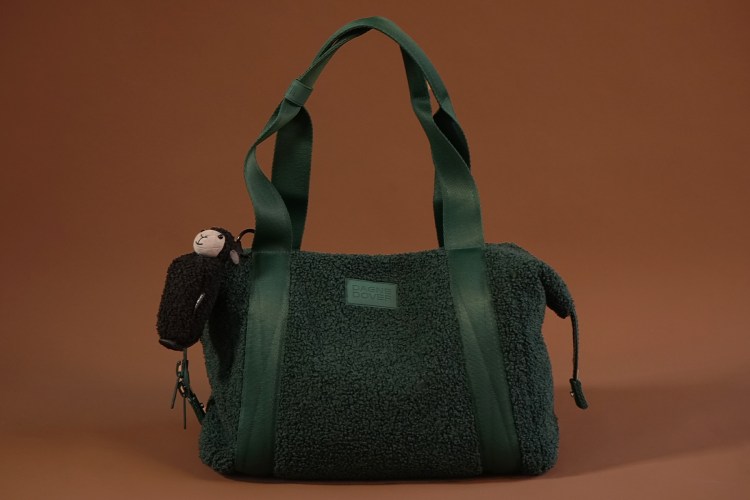Caviar, white truffles and Wagyu beef weave their way into the best restaurants’ menus for good reason: These rare, expensive, delicious ingredients elevate a dish and celebrate a moment of indulgence. One over-the-top bite can turn a special occasion dinner into a meal you’ll never forget. Plus, the deep flavors of these coveted ingredients can stand alone, so it doesn’t take a stint in culinary school to make them shine. We called upon a few experts to discuss serving caviar, truffles and Wagyu at home. With their advice, a solid product and some simple accompaniments, you can throw a luxe dinner party out of your own kitchen.
Caviar Never Goes Out of Style
“We shouldn’t be gatekeeping the finest ingredients,” says Raymond Trinh, co-owner of 63 Clinton, an intimate Lower East Side restaurant known for its stunning tasting menu, to which guests can (and absolutely should) add a caviar hand roll. “Everyone should have access to them.”
Comparing their $55 caviar hand roll to the $7 ikura (salmon roe) hand roll at your neighborhood sushi spot is like comparing Pappy Van Winkle to well whiskey. There’s no shame in enjoying the latter, but the former marks a moment. The hand roll at 63 Clinton is unforgettable, its toasty nori wrapped around pearls of tsuyahime, a Japanese sushi rice that translates to “shining princess.” The rice, which has been kissed with sweet mirin, malty black vinegar and a touch of fresh wasabi, bolsters a very generous serving of more than an ounce of caviar.
When you think about roe, it’s easy to imagine something fishy and salty. But here, the carefully-sourced, salt-cured sturgeon roe is buttery, creamy and nutty in its salinity. The roll brings dramatic appeal to an already impressive meal, and it’s not surprising that the kitchen is known to blow through a kilo of caviar on a busy night.
Plus, because you can easily drop $50 to $75 on an ounce of decent caviar from a gourmet grocer or fish market (a trusted caviar purveyor like Black Diamond may charge $100 per ounce, depending on market rates), the 63 Clinton hand roll is a pretty sweet deal and makes the rest of their seven-course tasting menu seem like a steal at its current price of $112. However, if you’re throwing a caviar party at home, it’ll come with a much larger price tag.
Trinh and his longtime friend and business partner, co-owner and chef Sam Klonts, have done their research on caviar. They chose their purveyor by tasting a bunch of samples, narrowing them down to their favorites and inviting friends to come in for a blind tasting. “I think everyone picked the same caviar,” Trinh says. “It was, of course, the most expensive one.”
For the most luscious caviar with the finest flavor and excellent pop, it’s worth splurging on the Russian imports. “Unfortunately, I haven’t found a product that is local or affordable that I really love,” Trihn says. “Even for myself, if I could find something that’s suitable for my Sunday off, I would vouch for it. It’s expensive for a reason.”

If you’re going for a mind-blowing caviar experience, Trinh’s advice is to get as much as you possibly can, enough that people feel comfortable digging into it. “If you’re serving caviar at a party, you’ll want to go big or go home,” he says. And at that point, the party can go one of two ways: “Simple or slutty,” he adds.
If you’re going simple, serve the caviar with potato chips or blinis if you like, but a vessel isn’t needed. “If you can just take spoonfuls of caviar, it’s gonna be fun,” Trihn says.
“And then on the opposite end, if you’re going to do the slutty version, go find a dirty pepperoni pizza and throw it on top,” he adds. “Fried chicken from Popeye’s? Delicious. I’ve had it on bagel bites. Chicken McNuggets? Delicious. I think it needs to be really out there, or dial it back to where you’re just tasting the caviar.”
A simple soiree calls for Champagne, its effervescence complementing the caviar’s flavor. But the perfect pairing for a McNugget party, according to Trinh, is an ice-cold Miller Highlife. “It’s so highbrow-lowbrow, but it really makes sense,” he says.
10 Mistakes You’re Making When Cooking a Steak (and How to Fix Them)
Don’t let a good piece of meat go to wasteTruffles: the Earthy Delicacy
If you can’t get on board with fish eggs or prefer a plant-based brand of gluttony, maybe something a little earthier is the way to go. The deep flavor and robust aroma of truffles might be described as nutty, garlicky or even cheesy. A truffle is an umami bomb, a heady, less-is-more ingredient. Unlike caviar, you don’t want to eat truffles with a spoon. An ounce serves two or three people, and it’s meant to finish a dish. Using more than a few shavings can be overkill, the culinary equivalent to going too hard with a musky cologne.
Caviar is farmed and available year-round, but the truffle — an underground fungus that requires a symbiotic relationship with tree roots and extremely specific growing conditions — is difficult to grow and has a short season. Black truffles have been cultivated in both the Northern and Southern Hemispheres, which makes them available for two seasons a year. But white truffles are mainly grown in and around Italy from September to December. Their scarcity amps up their price tag.
“When we’re composing dishes with white truffles, we keep them simple,” says Wood Jameson, chef de cuisine at Boka, a beloved Chicago restaurant known for incorporating truffles in its hyper-seasonal menus. “We want the white truffle to be the star of the show. We don’t really want to cover up or hide any of the uniqueness or specialness of the product, so we’ll do a lot of pasta with it — whether it’s a chestnut-ricotta agnolotti with white truffle and a little bit of parmesan, or a tagliatelle with parmesan and a little bit of toasted yeast and white truffle.”
Black truffles allow chefs to get a little more adventurous. “Because they’re a touch earthier, they can be a supporting cast member in a dish and really amplify everything,” Jameson says. “One dish we’ve done in the past is a strascinati pasta with peas, chanterelles, smoked scallop and black truffle. That umami earthiness and nuttiness pairs so beautifully with the smoked scallop and chanterelles, and peas are bright and fresh.”
Home cooks are more likely to reach for a truffle salt or oil, which Jameson recommends, as long as they’re purchased from reputable gourmet grocers, cheese shops or artisanal butcher shops where the brands they carry have the shopkeeper’s stamp of approval. Ideally, you want to find products that use actual truffles and not just chemicals that mimic the truffle’s flavor and aroma. “I think it’s a great introduction to flavor pairings without footing the bill for a fresh truffle,” he says. “It’s nice to play around and see what you like with it.”
Jameson recommends Rare Tea Cellar for gateway truffle products and Regalis Foods, which carries a range of items from truffle butter and truffle popcorn to large, highly-seasonal, fresh truffles that cost around $300 per ounce, which amounts to approximately two servings. A frozen black Périgord truffle, one of the most coveted varieties, is currently priced at $200 for four ounces.
While you’re shopping, you may also want to invest in a truffle shaver, which Jameson especially recommends for showcasing white truffles, which have soft edges and shave more easily. When you finish the truffle, the sharp blade of the shaver can be used to create fine, chef-approved slices of garlic, vegetables, chocolate, cheese and even cold butter. If you’re working with black truffles, which have a thicker skin, a Microplane grater can also get the job done.
As for what to grate them on, concentrate on carbs and cream. “I think truffles pair very well with fat-forward foods,” Jameson says. “Pasta is so nice is because whether it’s a cream sauce or a butter sauce, that fattiness and unctuousness pairs very well with what white truffles bring to the table. Try a really simple pasta with a butter glaze, some chives and a nice Pecorino or Parmesan cheese.”
If you’re comfortable whipping up a bechamel or mornay sauce, Jameson recommends that, too. He also likes truffles over risotto or mashed potatoes, but whatever you do, it’s best to use fresh truffles as soon as possible. If you have a few shavings leftover, they’re nice on fresh popcorn or a big serving of fries. Plus, Jameson offers a non-vegetarian option. I think truffles go really well with beef,” Jameson adds. “If you want to have a really beautiful celebratory meal, try shaving a little black or white truffle on a beef tenderloin, New York strip or ribeye.”
That Said, Wagyu Is Also a Decadent Treat
“If steak is your thing, we need to talk about Wagyu,” says Guy Crims, head butcher at The Butcher Shop by Niku Steak House in San Francisco. The character “Wa” refers to Japan and “gyu” means cow. Japanese Wagyu is pricey because it’s rare, and it’s rare because Japan is a compact, volcanic island, around the size of California, with very limited grazing land. However, Wagyu can be produced anywhere in the world, as long as the beef comes from cows that descended from a specific breed of Japanese cattle. American Wagyu is more accessible and thus less expensive.
Kobe beef, a mildly flavored variety of Japanese Wagyu with unrivaled marbling, a velvety texture and a buttery finish, must come from cattle of the Tajima or Tajiri strain. They must be bred, raised and slaughtered in Japan’s Hyōgo prefecture, where Kobe is the capital city. “Champagne only comes from one place, Champagne, France, and Kobe beef only comes from Kobe,” Crims says.
It takes years to raise the cattle from birth to harvest, and this amount of time multiplies the expense of feeding the animals. The loquacious butcher passionately rattles off numerous possibilities for cattle feed. “Your feed could be mango pulp or mango husks, rice straw, post-production mash from grain alcohol, wheat germ, barley, cracked corn, sake leaves. You could have the leaves coming off of tofu production, soy mash, all these different things.” The fat and sugar from the cow’s diet gets stored in its muscle fiber, which results in the marbling and buttery taste of the beef.

“We put a Yamazaki Whiskey mash finish in our Kobe,” Crims notes. “It’s exclusive to The Butcher Shop and Niku Steak House. I charge $300 a pound for that, but that doesn’t make it the most expensive. There are other Wagyus out there that are just as rare. There’s Takamori, the Drunken Wagyu, raised for us in Yamaguchi prefecture. One even rarer is the Snow Beef raised in Hokkaido, all the way up north. That could go for $400 or $500 a pound when you get your hands on it.”
On the lower end, you can find frozen American Wagyu at Costco, and this mainstream option may serve as a gateway that gets home cooks more interested in fresh, artisanal beef. “There’s a range from $99 a pound at Costco all the way up to $2,000 a pound,” says Crims, who has sold Wagyu at the highest price point in his own shop and is currently dry-aging a bone-in piece. “When all is said and done, that piece is going to be worth about $22,000.”
Crims is not shy about ultra-high costs. He speaks of beef with reverence. When you’re eating a piece of meat that has been carefully raised for years, it becomes sacred. With Kobe, less is more.
In fact, rather than serving Kobe beef as the main protein, Crims recommends using it as an accoutrement, a nice little bite. “We have these cuts that are anywhere from half to three-quarters of a pound that’ll serve from two to four people, but you’re not going to bulk up your guests on that $200 piece of meat,” he says. “Why don’t we get you something else that you can have a few bites of, family-style, and then you can go and use that as beef dessert?”
Crims waxes poetic about Iberian pork, Tyee salmon and Hokkaido scallops before circling back to the idea of serving Kobe as an after-dinner treat. “It’s very rich,” he says. “It’s not like other meats. It’s like drinking heavy whipping cream. After the fourth or fifth bite, to me, it’s enough.”
Preparing Wagyu requires little more than a well-seasoned cast iron pan and some confidence. Crims recommends bringing your steak up to room temperature and then getting your pan up to medium-high heat. “Don’t have it smoking hot,” he instructs. “Take your half-pound piece, which is usually about three-eighths of an inch thick, and put that onto the cast iron for about 45 seconds to a minute each side. Pull it off, don’t let it rest, start slicing it immediately and enjoy.”
Crims also suggests parboiling some fingerling potatoes before your start so you can cook them in the drippings when the steak is done. “You can smash them right into the bottom of your cast iron pan and pick up all that umami,” he says. “Wagyu fat is high in oleic acid. It’s higher than salmon, so it’s a very beneficial fat.” At The Butcher Shop, they sell Wagyu fat on its own, and he highly recommends saving any leftovers in a jar to cook your eggs the next morning.
In his drinking days, Crims liked to pair Wagyu with a good California pinot noir — particularly Peju — but nowadays he reaches for a non-alcoholic Japanese beer, like Asahi Non-Alcoholic Super Dry or a citrusy Hitatchino Nest Yuzu-Ginger Non-Ale. Like the pinot, “It’s got a nice bite and that acid cleanses the palate,” he says.
If you’re still solidifying your steak skills and would rather leave the prep to the pros, there’s no better Wagyu experience than Niku Steakhouse, where the menu includes ember-roasted Wagyu steaks, potatoes fried in Wagyu fat and even a Wagyu fat brownie for dessert, served with white soy caramel and Okinawa brown sugar ice cream.
Whichever high-end ingredients you choose, a luxurious meal can commemorate a notable moment or create a grand memory. Though their flavor profiles and uses vary, what these splurgy ingredients have in common is that a whole lot of passion, time and labor goes into cultivating them, and that isn’t lost on the people who truly savor them — whether you’re going easy on truffles and Kobe or hard on caviar.
“It still makes me feel great to see how much caviar we dish out through a day, through a week and a year. It’s a lot, and it still gets me excited when somebody says, ‘That was my first time having caviar, and it was amazing,’” Trinh says, his grin almost audible over the phone. “And I’m like, oh yes, you get it.”
Every Thursday, our resident experts see to it that you’re up to date on the latest from the world of drinks. Trend reports, bottle reviews, cocktail recipes and more. Sign up for THE SPILL now.



